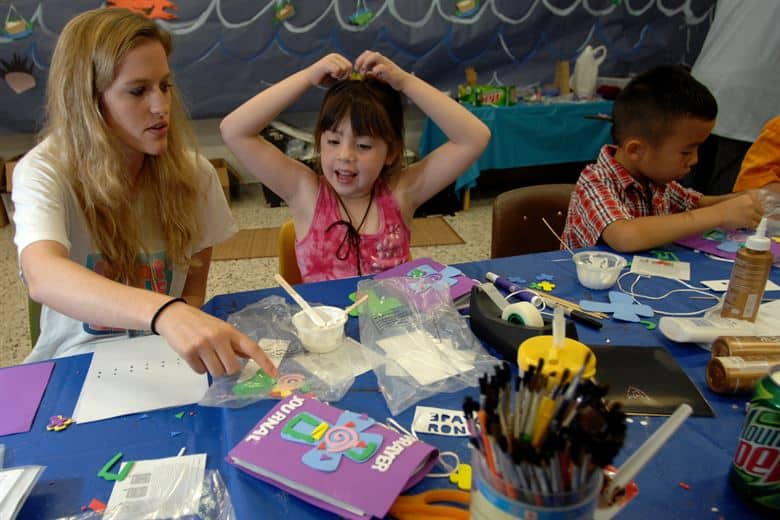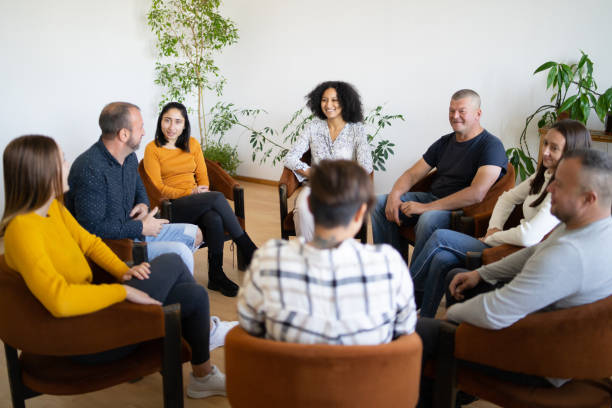This Is What the Reggio Emilia Approach to Early Childhood Education Is Like

|
Getting your Trinity Audio player ready...
|
What Is the Reggio Emilia Approach to Early Childhood Education?
Reggio Emilia is a research-based early childhood education approach. It is founded on the premise that young children are curious about their world and have great potential to learn from everything around them.
A Reggio Emilia inspired education program gives children a wide variety of educational opportunities that encourage self-expression, communication, problem-solving, and logical thinking.

4 Principles of the Reggio Emilia Approach
- interest-based multisensory curriculum
- in-depth projects for students
- integration of theatre, art, and music into education
- collaboration between students and staff
1. Developing the Curriculum for a Reggio Inspired Preschool Program
In the Reggio Emilia approach, teachers create the curriculum around children’s interests. This is referred to as Emergent Curriculum. Topics are initially decided upon by teachers or other personnel by talking with children and their families. The Emergent Curriculum might also include items or concepts that are generally interesting to children such as Duplo Blocks, children’s music, or toy animals.
Staff members collaborate about what they have learned regarding the students’ interests and what they know about children’s interests in order to develop the curriculum and decide which projects would be best for the students in the program.
Teachers discuss what materials their classrooms will need, and how they can encourage parents and the general community to become involved.

2. The Reggio Amelia Approach Includes In-Depth Projects for Students
In-depth research projects are built into the school day from the information gathered about children’s interests. Teachers often introduce projects to children as adventures. Adventures can last for a week or two, or they can take longer. In some cases, a project can take the entire school year.
Teachers provide guidance and support during these projects. The goal of the teacher is to help children decide which types of projects to pick, how they can represent what they know, and what materials would be best to create their project.

3. The Reggio Emilia Approach Utilizes Representational Development
Representational Development utilizes art to support children in the areas of language, social skills, and cognitive abilities (the cognitive processes include thinking, knowing, remembering, judging, and problem-solving).
Activities such as writing, art, construction, drama, music, shadow play, and puppetry — are viewed as essential to children’s early childhood experiences.
Representational Development is consistent with Developmental Psychologist, Howard Gardner’s, theory of multiple intelligences. Gardner believes that people have many kinds of intelligence (i.e., musical, bodily-kinesthetic, interpersonal, intrapersonal, spatial-visual, and linguistic verbal, logical-mathematical, and naturalistic) and all intelligence should be considered when educating the child.
Many of the activities utilized to tap multiple intelligences are multisensory activities. A method that is backed by research, using a multi-sensory approach allows children to touch, see, hear, and do in order to learn through a variety of senses. This helps with cognitive, physical, and social-emotional development.
4. The Reggio Emelia Approach Uses Collaboration Among Students & Staff
Children are encouraged to collaborate with one another and their teachers. Large and small groups work together to solve problems using dialogue, comparisons, negotiations, and other important interpersonal skills. Each child gets a chance to be heard promoting their sense of self and sense of belonging to a supportive community.

What Is the Teachers’ Role in the Reggio Amelia Approach?
The primary role of the teacher is to learn alongside the children while being a guide and resource in group learning experiences.
A Reggio Emilia teacher observes and tracks the growth of the children in the Reggio-Emilia program as well as the quality and effectiveness of the program itself.
Children within the program also get to see the growth they make on their projects and goals. Their teachers are able to track and/or show them their progress through videos, pictures, verbal/audio recordings, and work portfolios.
Reggio Emilia teachers also take time to reflect on what they have learned about themselves and their teaching.
How Do Teachers Incorporate Student Strengths in the Reggio Emilia Approach?
Photos of children at work and play, along with dictations of their experiences, help teachers and parents learn more about what works for the children. Teachers can then tie these discoveries into the classroom curriculum.
So if the children love dancing for example, and do well in this area, dancing may be incorporated more into the classroom. The same can be true for drawing, singing, building, etc.

These multisensory experiences allow teachers to build upon students’ strengths and interests, which in turn enhances their skills cognitively, physically, and socially.
Why Is the Classroom Called the Third Teacher in the Reggio Emilia Approach?
Similar to the Montessori Approach, the Reggio Emilia environment is an instructional tool. Teachers and/or administrators design the room (or space) in such a way that students have access to a variety of interests. The classroom can be traditional, outdoors, at home with virtual guidance, etc. Plants, animals, and materials (such as dishware, tablecloths, etc.) give the environment a home-like feeling.
How to Use Reggio Emilia Techniques in Your Classroom or Learning Environment
- Provide choices and options for projects
- Provide a variety of materials to use for projects
- Document children’s progress using different methods (e.g., video, pictures, work samples)
- Collaborate with parents and professionals to ensure you are on target regarding your students’ needs and interests. If you are not, seek input and adjust accordingly.
I think the Reggio Emilia approach could be adapted for students of any age, not just preschool. What’s your opinion? Comment below.
Reggio Emilia Video PresenationReggio Amelia Research References:
- Examining the Reggio Emilia Approach: Keys to Understanding Why it Motivates Students
- Bridging Borders: Children’s Right to Dignity, Civility, and Dialogue
- Reggio Emilia: An Essential Tool to Develop Critical Thinking in
Early Childhood
Education and Behavior – Keeping Us On The Same Page






